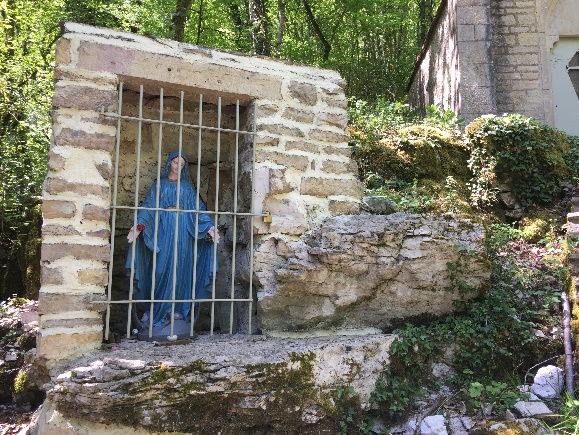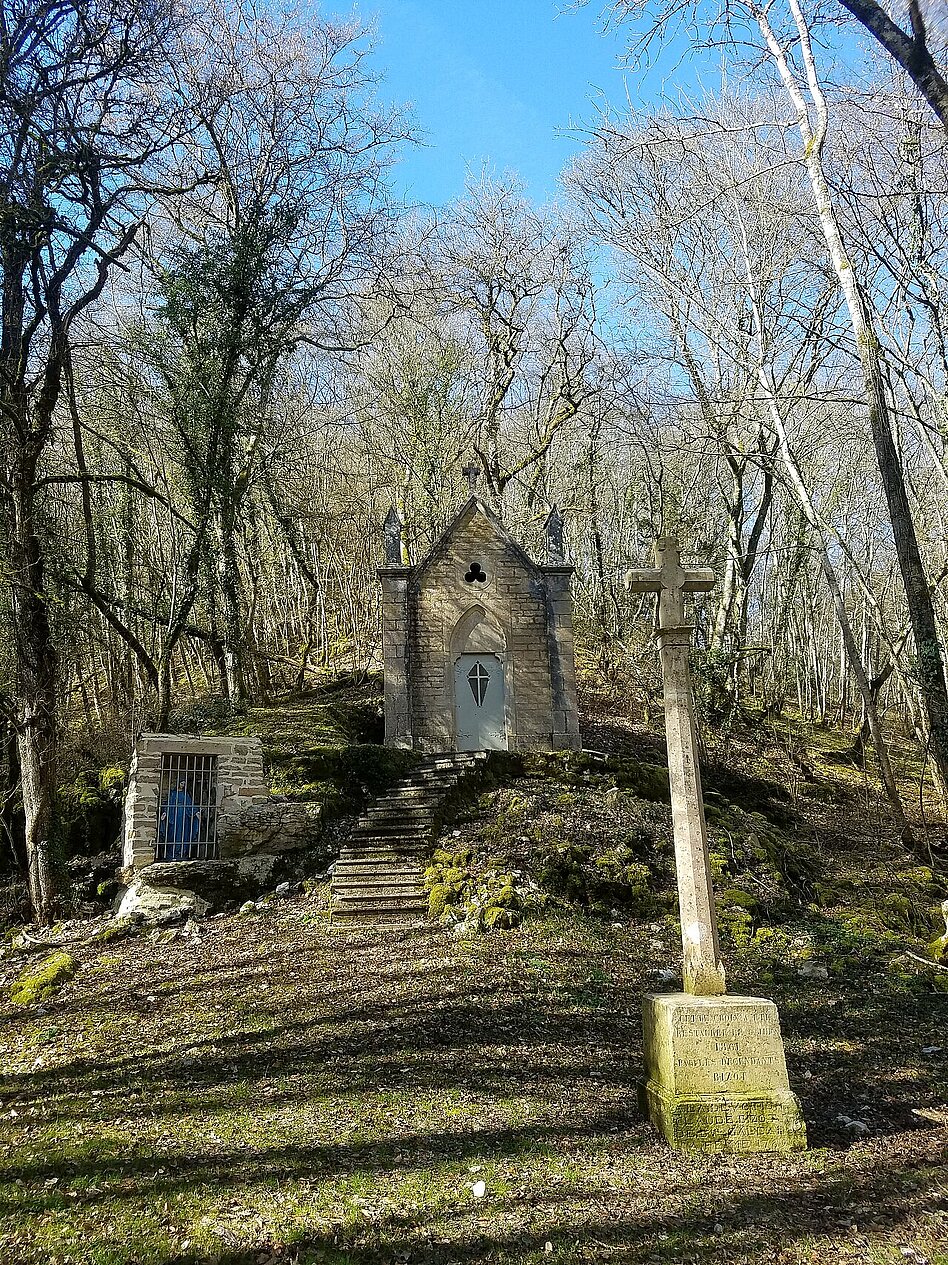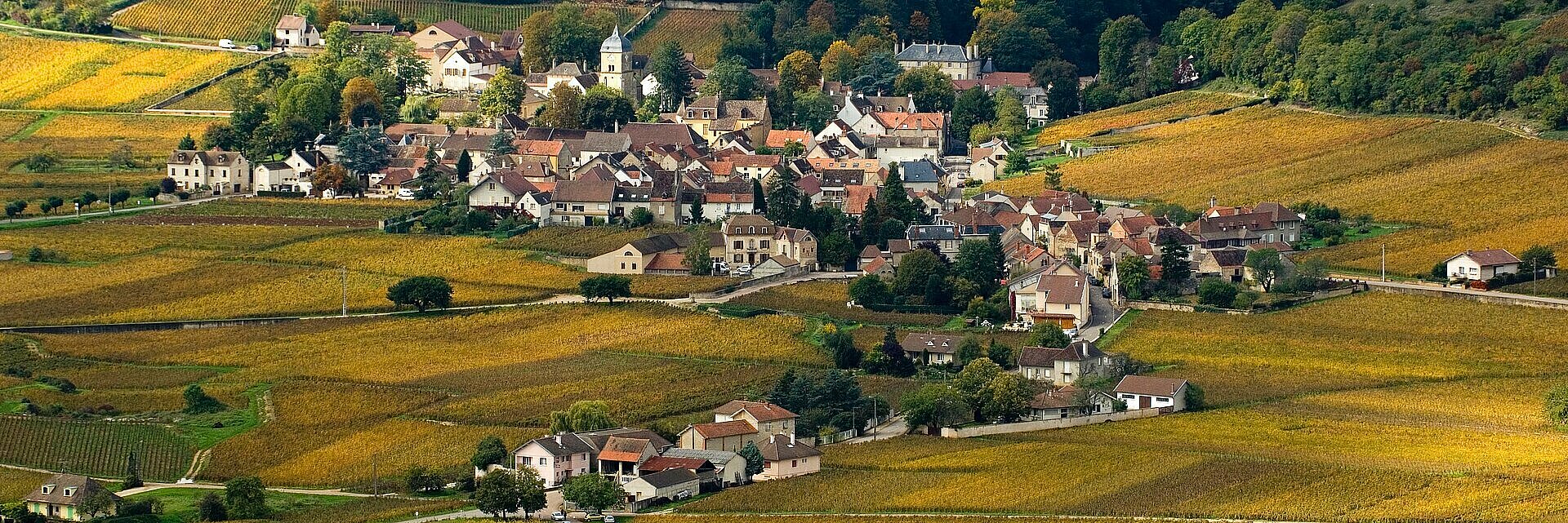Heritage

The history of the village begins in the Iron Age with the prehistoric camp of "Grognot", an isolated mountain in the rocky outcrop which dominates the site of the AMBIN valley (combe AMBIN).
The town as such was born in the 18th century.
If the village does not border a river, it hides nevertheless an underground torrent, the Grosne, which comes out of the Combe with, sometimes, violent resurgences.
Its name refers to the bubbling aspect of the Grosne, after the stormy rains, which inspires the name “Campus Ebulliens” or “Champ Bouillant”. The name Chambolle-Musigny was made official by the decree of April 15, 1878.
Its current coat of arms evokes Saint Barbe, Saint Patron (boss) of the village and of the firefighters.
The 20th century and the beginning of the 21st saw the official recognition of the wine-growing and the heritage wealth of the village.
The Mont du Grognot overlooking the chapel
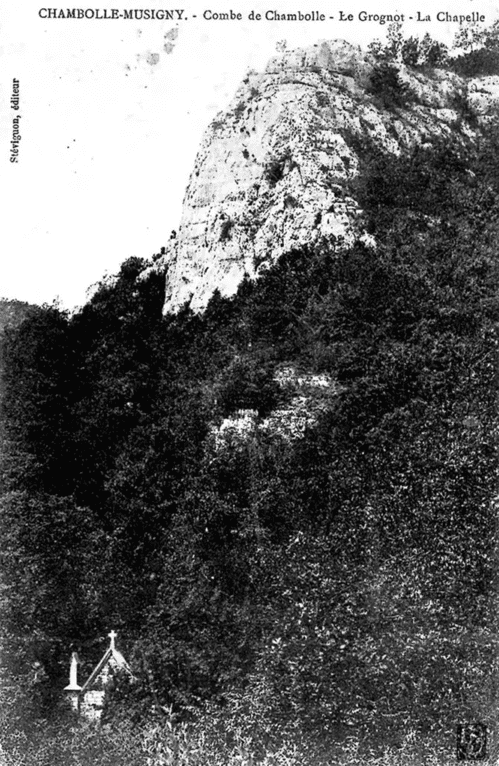
The history of the village begins in the Iron Age with the prehistoric camp of "Grognot", an isolated mountain in the rocky outcrop which dominates the site of the Valley AMBIN and whose name is the diminutive of "Groin".
It continued with the creation of a leper colony in 1275 at the aptly named place “Les Maladières” at the time of the First Crusades. Several remains bear witness to this presence, such as the beautiful stone carved with the face of a sick patient, and still visible today, in the rue des Champs.
Then, they realized the foundations of an agglomeration forming a hamlet attached to the Abbey of Cîteaux until the end of the 15th century.
It was only from the 16th century that the parish became autonomous. An act of August 9, 1500 grants the parishioners the construction of a church, built with the generous support of the Moisson family.
To the parish, logically, succeeded the town in the18th century.
Water
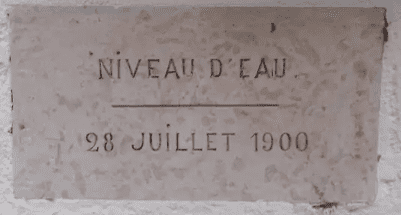
Stele located rue de Vergy recalling one of the most important resurgences of the Grosne caused by a violent storm
Although the village does not border a river, it nevertheless hides an underground torrent, the Grosne, which comes out of the Combe, with, sometimes, resurgences and eruptions so violent that they remain of sinister memory, as in 1744, 1803.b
It was then channeled and covered with large stone slabs during the 19th century, throughout the village. However, these developments were not sufficient in the years 1900, 1979 and 1983.
The roots of the name of the village
Its name refers to the bubbling aspect of the Grosne, after the rains and storms, which inspires the name “Campus Ebulliens” or “Champ Bouillant”.
The name Chambolle-Musigny was made official by the decree of April 15, 1878.
Its name derives from CAMBO (idea of curve) and from a patois word, the “chambe” (the leg), from the Gallic period.
The bubbling aspect, after the thunderstorm’s rains, of the Grosne stream, gives it an additional qualifier, and then appears the name “Campus Ebulliens” or “Champ Bouillant”.
It became "Cambola" in the Cartulary of the Abbey of Cîteaux, then "Chambola" in that of the Abbey of Labussière on Ouche in the 12th century
He metamorphoses to become Chambolle. Then comes the name of “Musigny”, the most famous vintage (CRU) of its land, once worn by a seigneurial family of the Arnay le Duc region. This name was made official by the decree of April 15, 1878.
The town's coat of arms
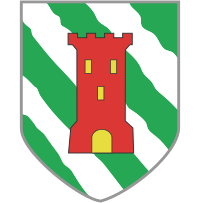
The current coat of arms evokes Saint Barbe, Saint Patron (the boss) of the village and the firefighters.
The current version was approved at the time of the Municipal Council on February 27, 1990. Its heraldic description is as follows: “From a green sinople with three wavy silver stripes, to a tower of open gules (in red) and masonry of gold debruising on the whole”. They include:
- The coloriel universe of weapons from the Moisson Family (16th century), which had the paintings of the church executed: The green background and 3 silver bands, as well as red and gold.
- A red stone tower on a silver -striped, green background. This tower, decorated with 3 windows, represents the jail in which was imprisoned Sainte Barbe, the patron saint of the village. The father of Sainte Barbe wished to marry his daughter, who refused, being converted to the Catholic religion, and preferred to die as a martyr rather than to deny her faith. The 3 windows of the tower represent the Holy Trinity. Sainte Barbe is the patron saint of firefighters, miners, artificers, artillerymen; and it is celebrated on December 4th.
The 20th century

The 20th century and the beginning of the 21st saw the official recognition of the natural wine and heritage wealth of the village.
The wine influences
From the early 13thcentury, most of the inhabitants of Chambolle lived from the work of the vineyard, either working in the vineyards of the town, or by helping the monks of the Clos de Vougeot.
The recognition of the “Appellation d'Origine Contrôlée” in 1936 further energizes this activity with estates such as Maison Charles Rasse or Stévignon.
Chambolle-Musigny had the honor of receiving the first Saint-Vincent Tournante in January 1938, then in 1954, 1979 and 2003.
2015 marks a new turning point with the classification of the climates of the Burgundy vineyards, including those of Chambolle, at the UNESCO World Heritage Site.
La Combe
The vine is not the only natural element classified in Chambolle. The Combe has been also since 1934. It follows a major construction site to transform the path into a road to facilitate the access.
A large part of the forest areas was also integrated into the European Natura 2000 network in 1992.
The church
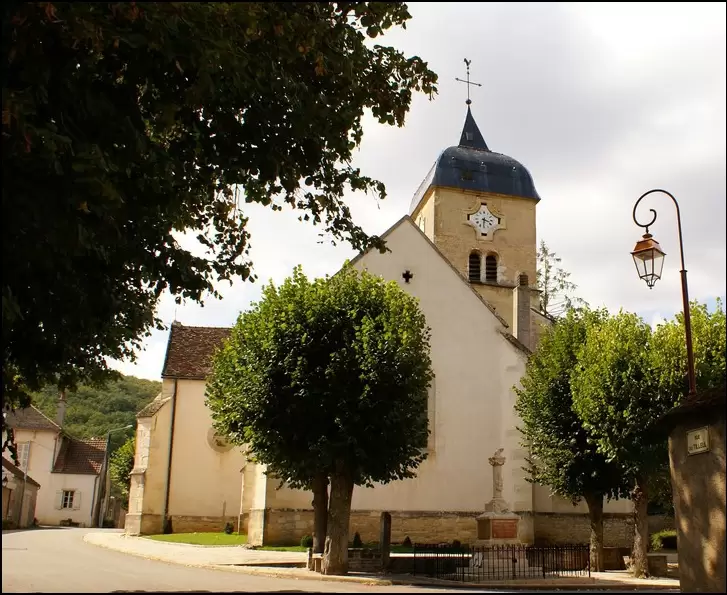
A JEWEL OF THE MUNICIPALITY, IT DESERVES TO BE DISCOVERED.
Built in a Gothic-Burgundy style on the initiative of Jean Moisson (family of merchants and officers of the king), ancestor of the family of the Count of Vogüé, its construction began in 1500 and was completed in 1506.
Near the side door, we discover a tomb covered with boxwood which recalls the presence of the old cemetery, which was at the time located around the church. If looking up, you can perceive the splendid sundial whose installation dates to 1855. The steeple, in Comtois style (Imperial Dome), remains an architectural question for the region. It covers a square tower and protects a bronze Bell, classified, dating from 1556.
The entrance is located under a classical pediment. The church includes a magnificent flat bedside choir in flamboyant warhead-vaulted style. This choir (classified since 1896) is decorated with monumental wall paintings, some of which were painted in the first half of the 16th century, also the Litanies of the Virgin.
The oldest paintings date from 1539: more than 70m² of biblical characters treated in trompe-l'oeil. In 1899, Louis Joseph Yperman (restorer of Historical Monuments) restored them, and in 1901, he designed decorations of his Cru in the transept, and represented in religious scenes landscapes and children of the village painted as angels.
The beauty of the stained-glass windows (vitraux), some of which date back to the 16th century, should also be emphasized.
The sundial
It is located on one of the facades of the Church. It is dated MDCCCLV (1885) and we find the monograms of Christ IHS and the Virgin MA (interlaced letters). The motto: “Time passes … weary, we pass. " | adress
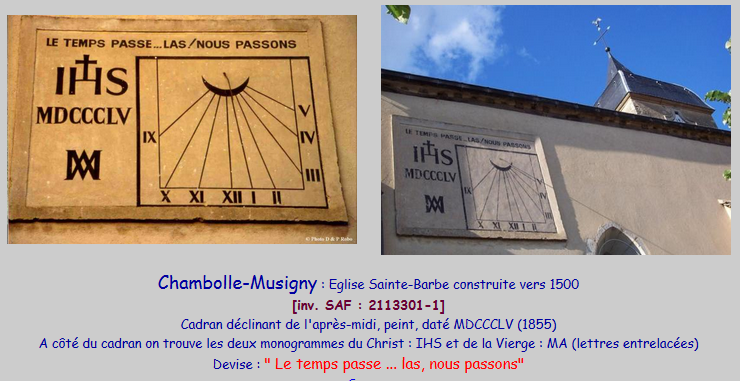
The Fountain
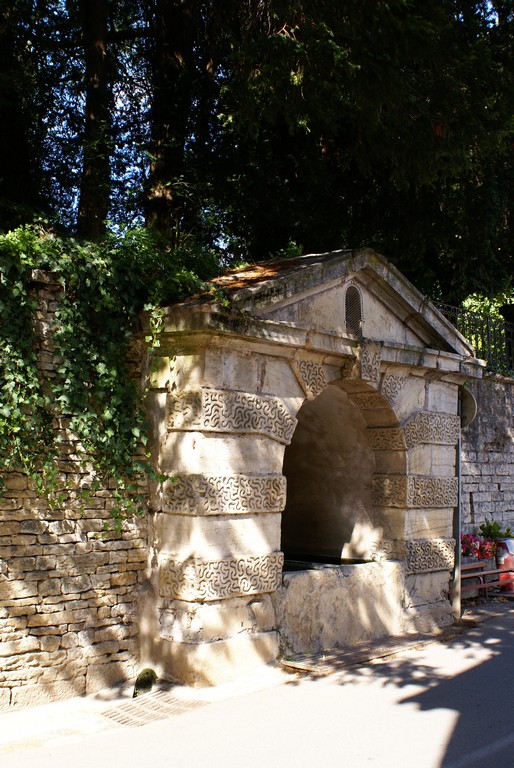
On the Route des Grands Crus, in the center of the village, is situated the pretty Sainte-Anne fountain with its neat architecture. It has a triangular pediment and is decorated with embossed stones. It is located at the rue de la Fontaine opposite the rue Sainte Barbe.
In front, the niche houses a polychrome statue of Saint Barbe.
Sullys Lime Tree
Chambolle-Musigny has a magnificent example (specimen) of Lime Tree which stands majestically in front of the church, on the Route des Grands Crus.
Exceptional for a tree of this age (over 400 years), it still has part of its main trunk which rises to a good height, giving the whole a very harmonious port (style).
A sign at the foot of the tree indicates a circumference of 8m70 and a height of 17m50.
It was at the instigation of Maximilien de Béthune, Duke of Sully, under the reign of King Henry IV, that many lime trees were planted in France. Sully had ordered that a lime tree be planted in each village so that the flowers could be used to treat the sick.
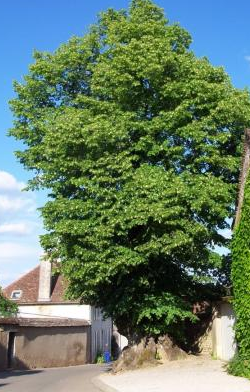
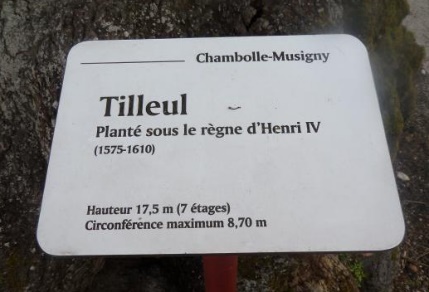
The Chapel Petite Combe de la Vierge
The chapel which is located on the pilgrims' route to Compostela was built in 1792 and is located at the foot of the mountain “le Grognot” towards the valley of Ambin.
